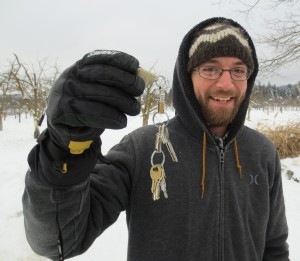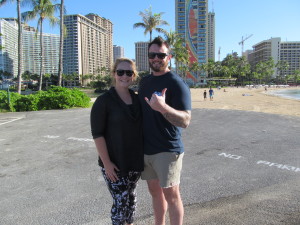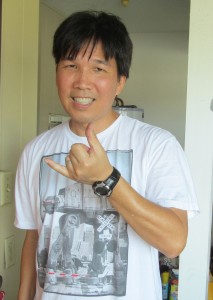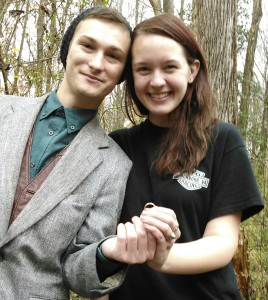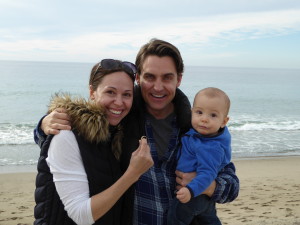
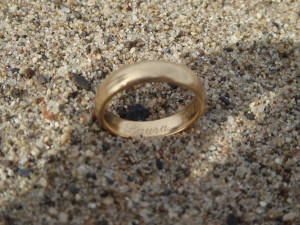
Adrian called me early evening on 12-26-15, but because I had been receiving over one hundred butt calls and texts from my traveling son in about 3 hours (and turned my ringer off), I did not see that I had a voice mail an email from him until later that night. He explained to me how he had been climbing the slope at the beach using his hands to gain traction, when he noticed his ring had come off. I promptly sent him and email letting him know I would be available at about 12:00 PM Sunday, to meet them for the the search. He let me know the next morning he would be able to meet me.
When I got to the spot, I met Adrian, his wife Laura, and their young son. Adrian took me to the spot where he remembered losing his ring, and I began my search. I searched the area thoroughly, but did not find his ring. I asked if he could have been North or South of the location whereby he gave me an area that he might have been, outside of the original location. The one thing to remember, is that the shoreline changes from day to day, and without perfect landmarks, it might be hard to find the exact location again. I went across the top of the slope from one end of his instructions to the other with no ring. After, I began to work down the slope, and ended up finding the ring about 25 feet from the original spot. When I found it, I picked it up to show Laura, and asked, « did the ring look like this ». When she saw it she hurried over, unsure, but looked inside to see her name and wedding date engraved inside, and became very excited with much joy. What a great opportunity, to be able to bring this kind of joy to hearts crushed by the loss of such an important part of their lives.
If you lose your ring or other metal item of value, call as soon as possible. I will work hard to help you find what you thought might never be found again. I search, Beverly Hills, Hermosa Beach, Huntington Beach, Long Beach, Los Angeles, Malibu, Manhattan Beach, Newport Beach, Rancho Palos Verdes, Redondo Beach, Santa Monica, Seal Beach, Simi Valley, Thousand Oaks, Torrance, Venice Beach, and all parks, yards, gardens, and ponds (to 5 foot depths) in all of Orange County, all of Los Angeles County, and Ventura County.
